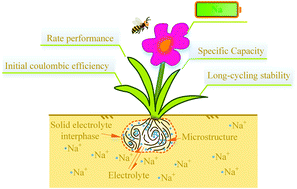Hard carbon for sodium storage: mechanism and optimization strategies toward commercialization
Abstract
Sodium-ion batteries (SIBs) have shown promising prospects for complementarity to lithium-ion batteries (LIBs) in the field of grid-scale energy storage. After a decade of continuous fundamental research on SIBs, it's becoming increasingly urgent to advance the commercialization. For SIB anode materials, hard carbon is the most mature and currently the only material likely to be commercialized, but it is still far away from large-scale industrialization. Herein, we carry out a comprehensive overview of the current state of the art in terms of three main aspects. Firstly, a fundamental understanding of the microstructure and sodium storage mechanism of hard carbon is introduced, which can be categorized into three different processes: capacitive adsorption, nanopore filling, and intercalation in carbon interlayers. Then, based on an in-depth understanding of the sodium storage mechanism, optimization methods in terms of increasing the specific capacity, rate performance, initial coulombic efficiency (ICE), and long-cycling stability are comprehensively summarized and analyzed. Finally, potential methods and associated benefits for the design of carbon structures and the solid electrolyte interface (SEI) are discussed, hoping to provide useful guidelines for future research and commercialization.



 Please wait while we load your content...
Please wait while we load your content...